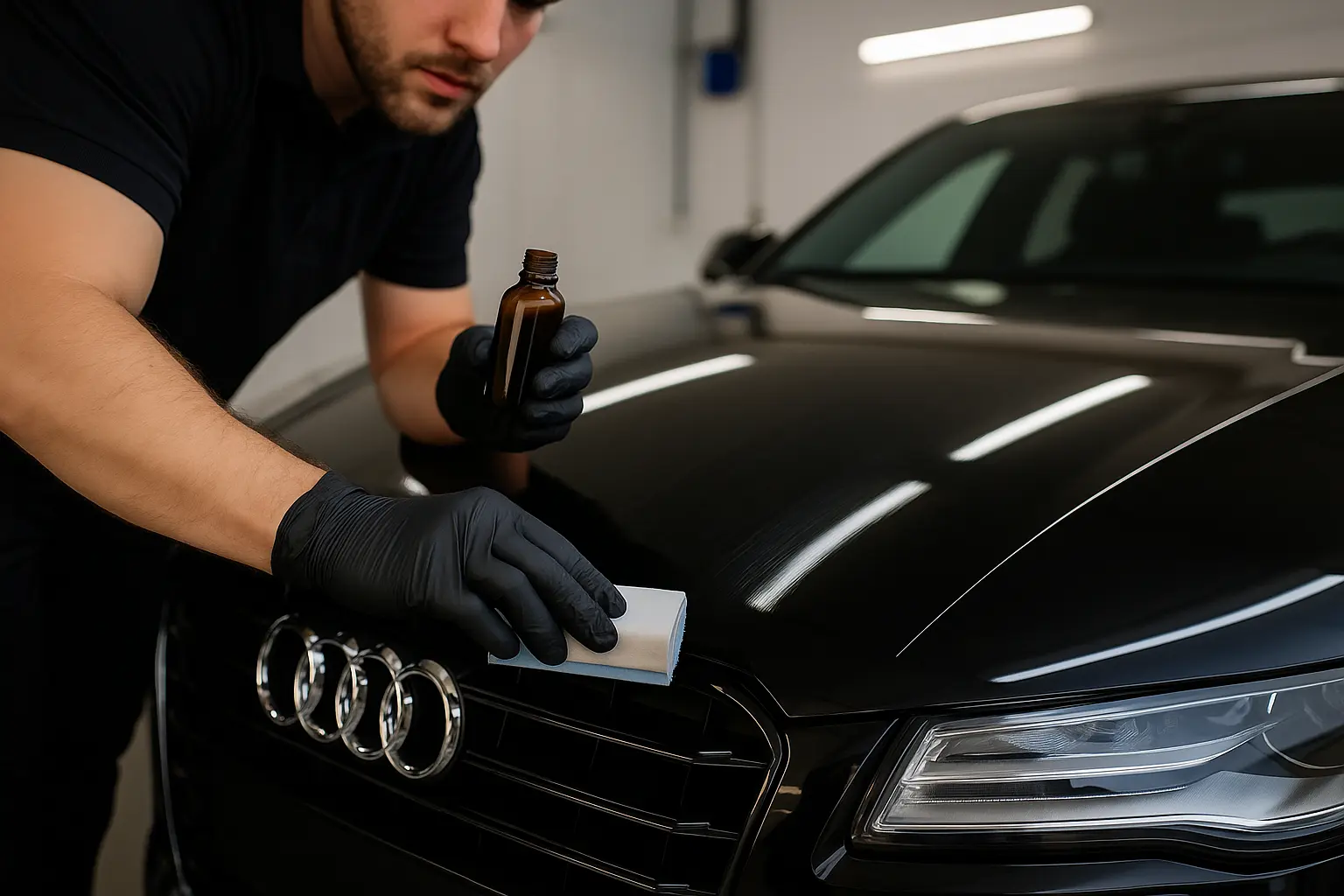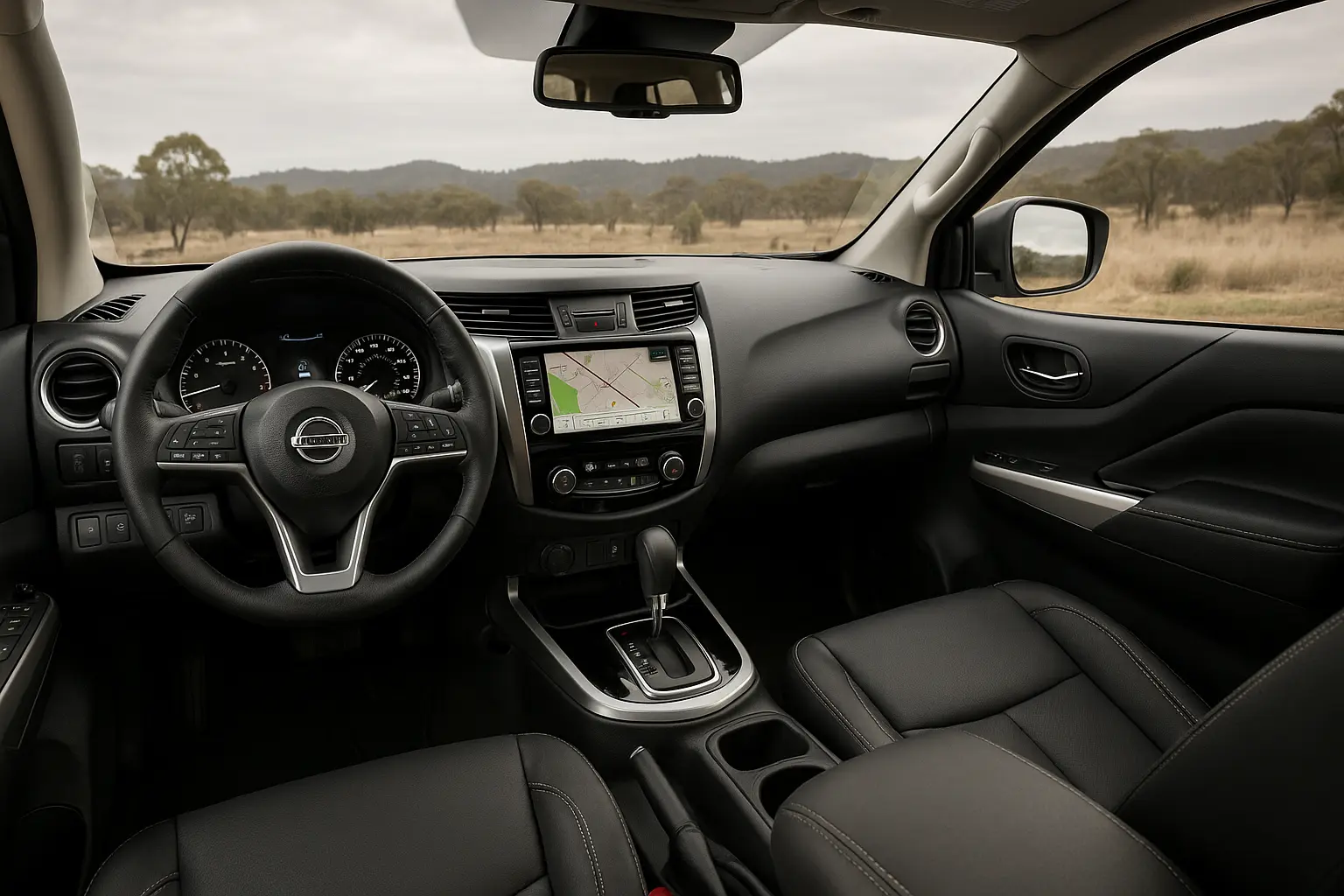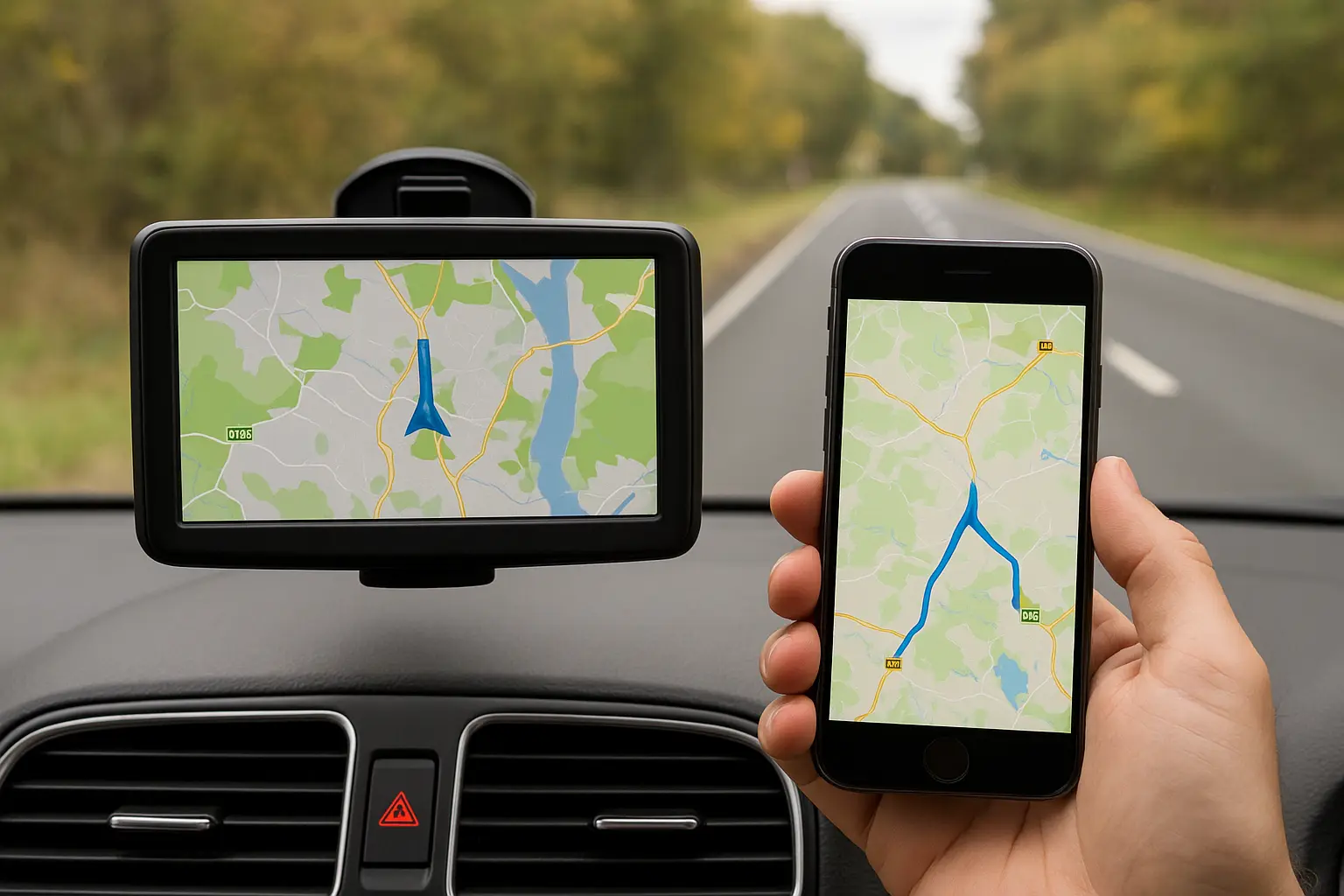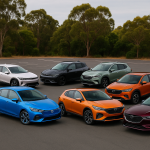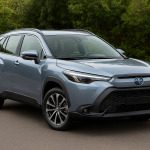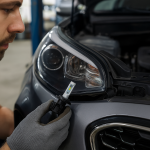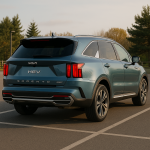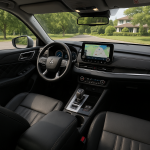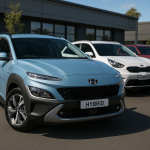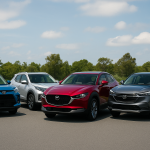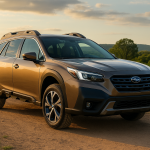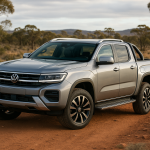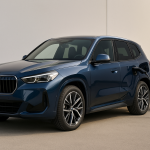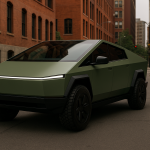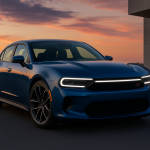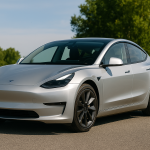Owning a car in Australia means facing a unique set of challenges. From harsh UV rays that fade paint, to coastal salt air that causes corrosion, to bush dust and debris on outback roads, our cars endure more than just daily commutes. Car paint is more than cosmetic—it’s a protective barrier for the bodywork underneath. When that barrier is compromised, rust, fading, and surface damage can shorten your car’s lifespan and reduce resale value.
That’s where car paint protection comes in. Whether you’re considering traditional wax, high-tech ceramic coatings, or protective films, the right choice can help maintain your car’s showroom shine, protect against Australia’s tough climate, and even save money long-term.
This guide breaks down the science, the products, and the practicalities of car paint protection so you can make an informed decision.
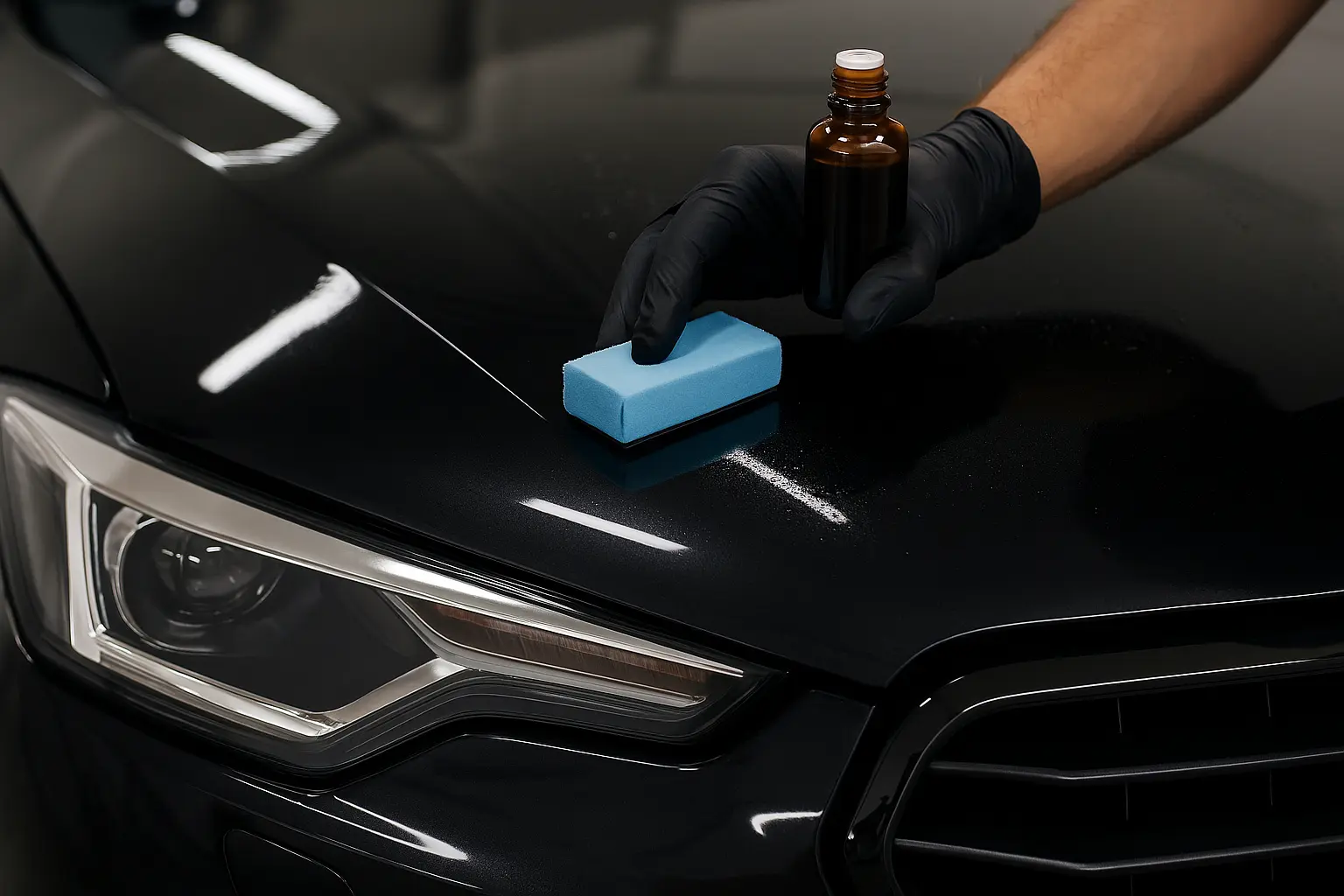
Understanding Car Paint and Its Enemies
Modern vehicles feature multi-layer paint systems:
Primer: Bonds paint to the body and prevents rust.
Basecoat: The actual colour.
Clearcoat: Provides gloss and UV protection.
While durable, this system is still vulnerable to environmental and physical stress. The major threats in Australia include:
UV Radiation: Intense sunlight causes fading, oxidation, and clearcoat failure.
Salt and Moisture: Coastal air speeds up rust.
Bird Droppings & Tree Sap: Highly acidic and can etch into paint.
Dust and Road Debris: Outback roads and highway gravel chip the surface.
Car Wash Chemicals: Harsh detergents strip protection layers.
Protective products act like a sacrificial shield—taking the damage before your paint does.
Car Paint Protection Options
Traditional Wax
Car wax has been the go-to solution for decades. Derived from natural carnauba or synthetic blends, wax provides a glossy finish and hydrophobic layer.
Pros:
Affordable and widely available.
Deep, rich shine that enthusiasts love.
Easy to apply at home.
Cons:
Lasts only 1–3 months in Australian conditions.
Requires frequent reapplication.
Provides limited UV protection.
Best For: Owners who enjoy regular detailing and want that classic showroom shine without long-term commitment.
Synthetic Sealants
A step up from wax, sealants are polymer-based and designed for durability.
Pros:
Lasts 6–12 months.
Better protection against UV, dirt, and contaminants.
Easy DIY application.
Cons:
Less “warm” shine than carnauba wax.
Still requires upkeep compared to ceramics.
Best For: Busy owners who want solid protection without weekly waxing.
Ceramic Coating
Ceramic coatings use liquid polymers that chemically bond with paint, forming a semi-permanent protective layer.
Pros:
Exceptional hydrophobic properties—water beads and slides off.
UV resistance prevents fading.
Lasts 2–5 years depending on quality.
Adds depth and gloss to paint.
Makes cleaning much easier.
Cons:
Professional application costs $800–$2,000 in Australia.
Improper DIY application can cause streaking or high spots.
Doesn’t prevent rock chips or deep scratches.
Best For: Drivers seeking long-term protection and reduced maintenance.
Paint Protection Film (PPF)
Also known as clear bra, this urethane film covers paint to physically block damage.
Pros:
Protects against stone chips, scratches, and swirl marks.
Self-healing properties in high-end films.
Lasts up to 10 years.
Cons:
Expensive ($2,000–$6,000 depending on coverage).
Requires professional installation.
Slightly alters paint appearance if low-quality film is used.
Best For: Luxury and performance cars, 4x4s that see off-road action, or owners wanting maximum protection.
Ceramic + PPF Combination
Some owners opt for both: PPF on high-impact areas (bonnet, bumper, mirrors) plus ceramic coating on the rest of the body. This hybrid approach balances physical protection and chemical resistance.
Factors to Consider Before Choosing
When deciding on car paint protection, think about:
Budget: Wax under $50 vs. ceramic/PPF in the thousands.
Vehicle Age: New cars benefit most from protection. Older cars may need paint correction first.
Usage: City runabout vs. outback explorer.
Ownership Plans: Long-term keepers justify ceramic or PPF investment.
DIY vs. Professional: Be realistic about your skill and patience.
Best Car Wax Options in Australia
If you prefer traditional waxing, some of the most popular and effective options include:
Meguiar’s Gold Class Carnauba Plus: Delivers a deep shine, ideal for dark colours.
Mother’s California Gold Pure Carnauba Wax: Natural formula, easy to apply.
Turtle Wax Hybrid Solutions: A synthetic blend with ceramic elements for longer durability.
Bowden’s Own Carnauba Body Wax: Australian brand tailored to local climate.
These waxes cost between $30–$70 and suit weekend detailers who enjoy hands-on care.
Ceramic Coating Brands Popular in Australia
Ceramic coatings vary in quality, but top professional and DIY products include:
Gtechniq Crystal Serum Ultra – Professional grade, lasts up to 9 years.
CarPro CQuartz UK 3.0 – Popular DIY choice, excellent UV resistance.
Gyeon Q² Mohs Evo – Balanced durability and gloss.
Autoglym Ultra High Definition Ceramic – User-friendly with strong protection.
While pro-grade coatings demand certified installers, many DIY kits are available for under $200.
Paint Protection Film in the Australian Market
PPF is gaining traction, especially among performance car and 4WD owners. Leading brands include:
XPEL Ultimate Plus – Known for self-healing properties.
SunTek Ultra – Crystal clear, resists yellowing.
3M Scotchgard Pro Series – Durable and widely available.
Most installers offer tailored packages, from front-end kits (~$2,500) to full-body wraps (~$6,000).
The Truth About Dealership Paint Protection
When buying a new car, dealerships often push “paint protection packages” for $1,500–$3,000. These typically involve a basic ceramic sealant and sometimes interior fabric protection.
Pros: Convenient, rolled into finance, instant peace of mind.
Cons: Overpriced compared to independent detailers, quality varies.
Many Australian car owners report better value seeking out a specialist detailer after purchase.
DIY vs. Professional Application
DIY Wax/Sealant: Simple, inexpensive, but time-consuming.
DIY Ceramic Kits: Possible, but requires preparation, patience, and controlled environment.
Professional Detailing: Higher cost but guarantees flawless results and warranties.
In general, wax and sealants are DIY-friendly, while ceramic coatings and PPF are best left to professionals for long-lasting results.
Maintenance Tips for Paint Protection
Once your car is protected, keeping it that way is key:
Wash using pH-neutral car shampoos.
Avoid automatic car washes with harsh brushes.
Use microfiber towels to prevent swirls.
Apply booster sprays for ceramic coatings every few months.
Inspect PPF for damage after off-road trips.
With proper care, your chosen protection will perform at its best.
Cost Comparison
Wax: $30–$70 per tub, lasts 1–3 months.
Sealant: $50–$150, lasts 6–12 months.
Ceramic Coating: $150–$250 DIY, $800–$2,000 professional.
Paint Protection Film: $2,000–$6,000 depending on coverage.
While the upfront cost of ceramic and PPF is steep, they provide better long-term value when factoring in maintenance, paint correction, and resale value.
Resale Value and Long-Term Benefits
Well-protected cars maintain their colour, gloss, and body condition. This translates directly to higher resale or trade-in values. Buyers are more likely to pay a premium for a vehicle that still looks like new.
Environmental Impact and Eco-Friendly Options
Some products now focus on sustainability:
Waterless wash & wax products reduce water usage.
Biodegradable sealants are available.
Ceramic coatings reduce the need for frequent washes, lowering chemical runoff.
Eco-minded car owners can choose protection methods that minimise environmental footprint while still safeguarding their paint.
Conclusion: What’s the Best Option for You?
There’s no one-size-fits-all answer to car paint protection in Australia.
If you enjoy weekend detailing: Wax or sealants offer flexibility.
If you want minimal upkeep: Ceramic coating is the sweet spot.
If you drive long distances, off-road, or own a high-end car: PPF or ceramic + PPF is worth the investment.
If buying new: Consider skipping the dealership package and visiting a reputable detailer.
Ultimately, paint protection is about more than looks—it’s about preserving your investment and ensuring your car remains resilient against Australia’s tough climate for years to come.
Leave a comment
Your email address will not be published. Required fields are marked *


